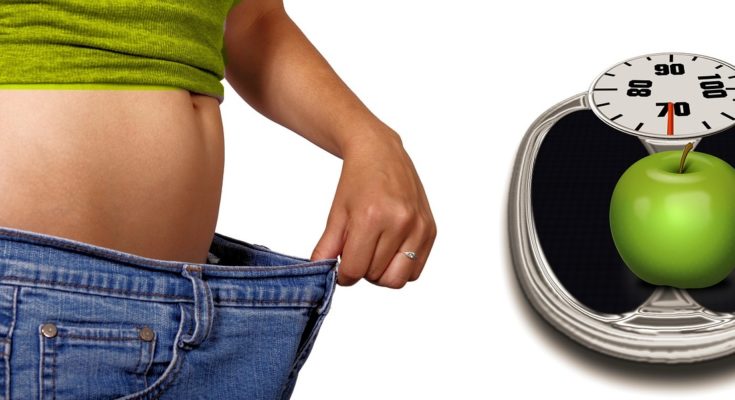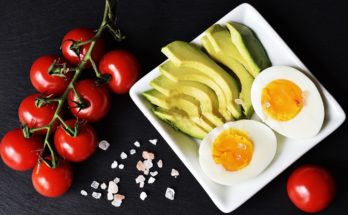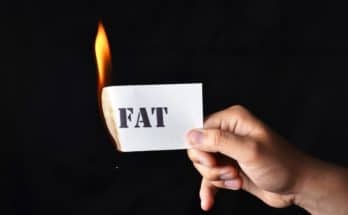Welcome to “Slim Chance,” a twice-monthly series in which author Amber Petty documents the happiness and crappiness of losing weight.
Weight: 236.2 pounds
Lost in Two Weeks: 2.2 pounds
Total Lost: 16.8 pounds
In the last chapter of my column, Slim Chance, I introduced Pamela Peeke, M.D., a saint of a woman who decided to work with me out of the kindness of her heart. The crux of her advice was to get rid of the “diet attitude” and stop counting calories, macros, or any other made-up point system.
I was skeptical. I’ve heard people preach the “this isn’t a diet” diet before, and even if you aren’t counting every ounce of chickpeas in your salad, if you have to drastically watch what you eat… you’re dieting. When I did keto, I didn’t count my macros, but I had to treat rice like it was the devil and bananas like they were some kind of C-list demon. Eventually, that got old, and the keto weight loss disappeared.
Thankfully, Dr. Peeke’s technique honestly doesn’t feel like a diet to me. I know everyone says that! I’ve seen that exact statement on Weight Watchers message boards, and IMO, WW is the most diet-y of diets. But for me at least, Dr. Peeke’s rules for eating have helped me rein in bad habits without feeling like all the joy of food is gone.
Get to the rules already!
- Keep at least 12 hours between dinner and breakfast.
- Avoid processed food.
- Don’t eat starchy or grain-based carbs after 3 p.m.
- Try to eat most of your calories in the afternoon.
- Try to stop eating for the night by 7 p.m.
- Walk about an hour every day.
Then, before you eat something, ask yourself:
- Will this make me lose control?
- Will it cause me shame, blame, or guilt?
If the answer is “yes” to either question, then put that food away. It doesn’t mean you can never have it again, it just means it’s not for you right now.
And the only rule that’s really set in stone is the 12-hour rule.
No matter when you finish eating for the day, do not eat again until 12 hours have passed. So, if you finished eating dinner at 7 p.m., don’t eat again until 7 a.m. (or 11 a.m. for a 16-hour no-eating period, if you choose).
The other rules are flexible because life changes constantly, and if your way of eating is too rigid, it’ll break.
I also email Dr. Peeke every night about my Mind, Mouth, and Muscle for the day—a quick update on my overall outlook (mind), how I feel around eating (mouth), and what I did for activity that day (muscle). She responds, gives advice, and cheers on my successes.
Isn’t this just intermittent fasting?
“First, this is not fasting. Instead, it’s eating (and living) based on natural circadian rhythm. You’ve got rhythm!” says Dr. Peake. Though the mechanics of having a nourishing period (the 8-12 hours a day you eat) and a rejuvenation period (the rest of the day when you’re not eating) are similar to intermittent fasting (IF), changing the words around it and knowing the reason why you’re restricting your eating times make a big difference, according to Dr. Peake.
Fasting is part of several religious holidays, Peake notes, and so the word can often have that connection. “It can also feel draconian, with visions of gnashing and grinding of teeth as you force yourself not to eat,” she says. “Forget all of that.” Instead, this is about giving your body ample time to regenerate and restore (without all that tiresome digestion getting in the way).
“Roughly six hours after your last bite, your body switches from digestion to housecleaning: Envision Dyson vacuums cleaning out cellular debris, which stimulates the growth of new cells throughout the body,” Dr. Peake says. “The scientific word for this is ‘autophagy‘ (self-eating/cleaning), the discovery of which was rewarded with the 2016 Nobel Prize in medicine and physiology.”
Though Dr. Peake recommends a diet of non-processed foods and avoiding simple carbs after 3 p.m., the rest of the diet isn’t really that important. “Research has shown that the type of dietary pattern is less important than adhering to those 8-12 hours of eating time. The when factor is critical,” according to Peake.
Dr. Peake’s recommendations are supported by the findings of the Salk Institute, and a recent mouse trial found IF helped with weight loss and longevity. Now, you can’t jump to conclusions based on rodents, but the medical study included some cute mice cartoons, so I give them extra credit for that.

Can you really lose weight without counting anything?
I have been. Since I started this plan a month ago, I’ve lost about 10 pounds. Now, one of those weeks I only lost .2 pounds, while another week I lost 4, so it’s all over the map. But overall, it seems to be working.
Here’s the thing that’s really changed: I’m not thinking about food all the time.
For me, having a couple simple rules to follow makes things much easier. And the fact that I can eat carbs also makes a huge difference. Who knew that I’d be over the moon to have permission to eat quinoa, but here I am.
Is it hard?
This way of eating has been an adjustment. Typically, I like to eat very little during the day, then eat all of the things at night. When I had to stop eating by 7 p.m., I had a couple of hungry evenings and light cravings for dessert. Not hog-wild “I’ll hunt down every grocery store in a five-mile radius until I find the ice cream I want” style cravings (… and yes, I’ve absolutely done that).
Just light ones, like, “Oh, it would be nice to have some berries. I suppose they’ll have to wait till the morrow”-type thoughts. I mean, my thoughts probably weren’t that genteel, but my inner monologue has become more Jane Austen than Stone Cold at this point in my weight-loss journey.
But in less than a week, my eating schedule completely changed. I was less hungry at night, naturally wanted to eat more during the day, and my polite cravings faded even further away.
Of course, the thought of a See’s candy followed by a slice of pizza still crosses my mind, but I’m able to push it aside easily, which hasn’t been my experience with diets in the past.
I can’t really explain why, but I’m not in that constant cycle of worry about food. I’m not freaked out about every choice I make. I just follow the rules. And when I ask myself, “Will this make me feel shame, blame, or guilt?” I always know the answer.
Right now, nachos are not going to happen. They’ll make me feel out of control. But an occasional tiki drink from a bar I love? That’s a yes. Tiki things bring me great joy so I’ll drink a Navy Grog once in a while, push aside the tortilla chips, and feel like I’m living a normal, healthy life.
Following a set of rules about what you eat—that’s just a diet, right?
This really feels different. My typical way of eating was broken. So, weight loss or no, I did have to change it or I’d wind up with diabetes and even more self-hate. Dr. Peeke’s recommendations may not work for everyone—they may feel too restrictive or won’t gel with your style or issues. That’s totally fine. But so far, this plan has simply guided me away from emotional eating and reintroduced me to my more intuitive, moderate self.
Also, I want to be clear that I like this becuse it’s working for me, but restricting your eating might not be best for everyone. Maybe the idea of writing MMMs every night sounds like a nightmare to you, and that’s totally fine. I recommend finding what fits your life, even if it doesn’t look anything like what I’m doing.
Will you have to eat like this forever?
Yes. Yes, I will.
The reality is, if I want to lose weight, I’m going to have to change my choices and thoughts about food. There’s no getting around it. You can’t magically “have it all,” no matter what Oprah says.
But this approach is helping me feel healthier—mentally and physically. Instead of masking my feelings with food, I’m starting to actually deal with my emotions. I’m sharing with my husband more and reaching out to people for help (or just to vent—thanks, Mom!).
I’m starting to trust myself with food and realizing that I’m not just a binge-eating monster who’ll take down an entire buffet in less than an hour. I know what foods are good for me, and instead of feeling like a failure because I ate a banana and screwed up my carb counts, I can eat a banana and move on with my day.
Will I eat a diet rich with Pop Tarts and pizza again? No, not the way I did. I can make my own pizza with good ingredients (and believe me, I will), but a lot of the processed food of my past needs to no longer be part of my diet. That idea used to upset me, but as of right now, it doesn’t feel bad at all.
I still have a lot of weight to lose and a long way to go to fix my body image and self-talk. But things seem to be moving in the right direction.
There’s a little part of me that thinks: “You did it! Now, enough with that healthy stuff and go back to your old ways.” So I have to silence that backsliding voice and keep up the practice of eating well and being reasonably active. It doesn’t sound like much, but it’s work.
Amber Petty is an L.A.-based writer and a regular contributor to Greatist. Follow along as she shares her weight-loss journey in her new bi-monthly column, Slim Chance. Take singing lessons from her via Sing a Different Tune and follow her on Instagram @Ambernpetty.




